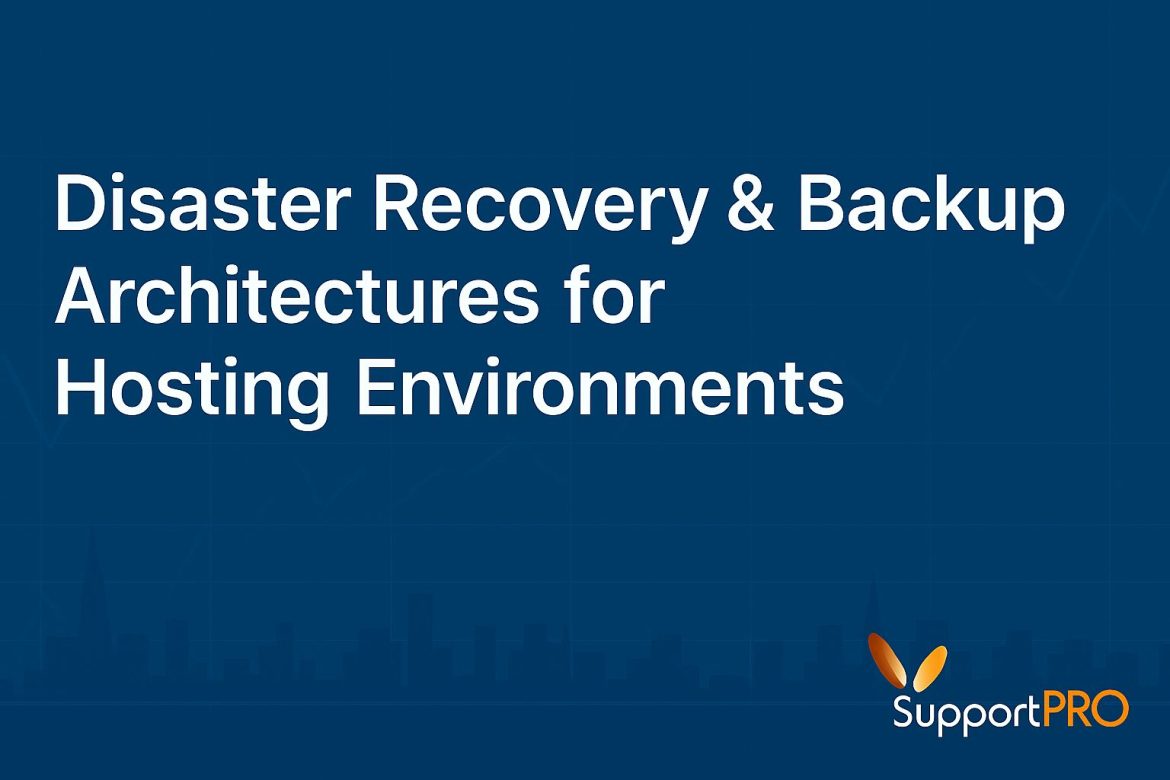Introduction
In hosting, reliability is everything. Customers want their websites and data to be accessible at all times. However, no matter how well everything is arranged, accidents still happen. Natural cataclysms, hacker attacks, and server breakdowns are all possible.
When that happens, the speed at which your hosting provider can get everything back to normal matters a lot. This is where disaster recovery (DR) and backup systems come into play. Apart from safeguarding the data, they ensure the business resumes its operations within no time, hence maintaining customer loyalty.
In this article, we discuss the importance of disaster recovery and the challenges it presents.
Why is Disaster Recovery Important?
Disaster recovery is not optional for hosting providers. Without it, even a momentary loss of access can cause:
Financial loss: An e-commerce site risks losing thousands of dollars in sales during a blackout.
Data loss: Customer data can be lost if backups are not performed regularly.
Reputation damage: Customers are likely to switch to another provider if they do not trust the current one.
Compliance issues: Compliance violations – The inability to protect sensitive data adequately could lead to regulatory non-compliance, such as with GDPR or HIPAA.
An effective recovery system empowers providers to act promptly, mitigate damage, and show they can be trusted even when things go wrong.
Principles of Disaster Recovery and Backups
Effective recovery practices are based on several principles. Redundancy ensures that there is no single point of failure, and clusters, RAID arrays, and failover mechanisms keep services operational even when an incident occurs. Daily backups are equally vital because the data is regularly duplicated, encrypted, and stored in multiple locations to reduce abuse. Additionally, data integrity is essential, and backups should be routinely tested. After all, a backup is useless if it cannot be restored. The hosting providers need to establish a Recovery Time Objective (RTO) for the applications, which means the applications have to be recovered within minutes in case of failure. Finally, Recovery Point Objective (RPO) refers to the amount of data that an organization can afford to lose. The lower the RPO, the more frequent backups need to be to minimize data loss.
Backup alternatives for Hosting Providers
Each hosting environment has different needs, so there is no universal solution for website backups. While some vendors care about the cost, others might care about compliance requirements or recovery time. The most popular methods and their practical effects are as follows:
Local backups are the most convenient option. Because they are stored on the same server or in the same data center, they are cheap and easy to restore. The downside is that those backups would be lost together with the primary system if the entire data center went down.
Remote or off-site backups address this by transferring data to a different physical location using protocols such as rsync, SFTP, or FTP. They are much safer in the event of a local disaster, but the network transfer times can make the recovery process slower.
Cloud utilizes services like AWS S3, Google Cloud Storage, or Azure. Thanks to their global distribution and remarkable scalability, they can handle immense amounts of data and offer exceptional reliability. Strong encryption is needed to protect sensitive data, and prices can rise exponentially if the storage is not optimized.
Incremental and differential backups are more intelligent. They just store the changes you make rather than copy the whole thing. Differential backups will be easier to recover but require more storage space, while incremental backups are the fastest and use the least storage. Both techniques reduce strain on the system and enable backups of large datasets.
Snapshots capture the system’s state at a specific moment in time, usually implemented at the storage or virtualization layer. They recover from them so quickly that close to instantaneous rollbacks are sometimes possible. However, they require a lot of storage capacity and robust systems.
Most hosting companies do not rely on only one method. Instead, they use a combination of methods like local backups (for quick recoveries), cloud backups (for reliability), and incremental backups (to reduce storage demand). This multi-layered approach balances data backup cost, speed, and security so that the stolen or lost data can be restored.
Disaster Recovery Strategies
Hosting providers need to have more than just backups.
Hot sites: Fully duplicated facilities that can immediately assume operations. Most costly, but quickest.
Warm sites: Partially replicated; require setup before they can become operational. Even cost and speed.
Cold sites: Facilities kept in readiness but unpopulated until needed for disaster recovery. Less expensive, but slower.
Failover systems: Load balancers redirect traffic if a server crashes.
Geographic: Data are distributed across multiple regions to handle local outages.
Testing: Regular simulations are necessary. Many fail to do this and end up realizing that their plans cannot work when a disruption occurs.
Challenges Providers Face
Disaster recovery is not easy. Hosting providers frequently face the following issues:
-Increasing data volumes make frequent backups harder.
-Balancing costs with strong protection
-Complex hybrid and multi-cloud infrastructures.
-In Many customers assume backups are part of the package, which is not always the case.
Conclusion
For hosting companies, disaster recovery and backups are not merely technical considerations. They are the cornerstones of reputation. Any minute of downtime can lead to revenue, client, and reputation losses. Proper strategies such as redundancy, snapshots, cloud storage, and tested failover systems ensure that providers are always prepared. But technology is only half the solution. You need to find a partner who knows the hosting industry inside and out.
That’s where SupportPRO comes in. With our continuous monitoring and 24/7 support, we empower hosting providers to establish backup and recovery systems that protect the relationships they have built. In hosting, it’s not a matter of if something will go wrong, but when. And when it does, the providers who are ready will always stand apart.


